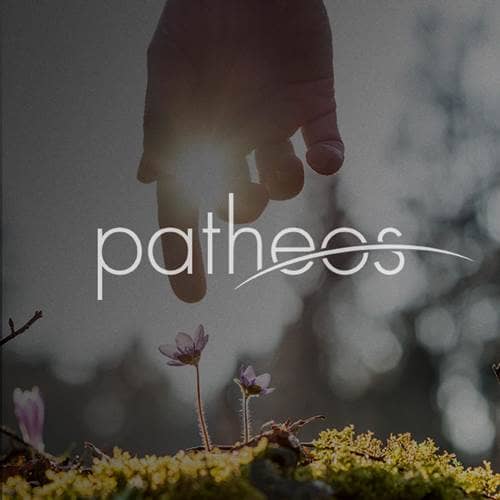- Trending:
- Pope Leo Xiv
- |
- Israel
- |
- Trump
- |
- Social Justice
- |
- Peace
- |
- Love
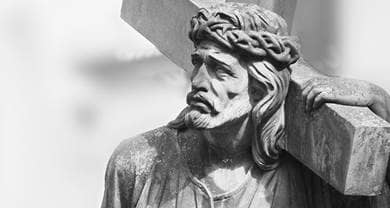
RELIGION LIBRARY
Christianity
Rites and Ceremonies
This article introduces some practices broadly applicable to multiple Christian denominations. The rites and ceremonies of a particular denomination will be described in the article on that tradition.
 The most important Christian rituals are called sacraments, sacred rites that convey God's sacred power or grace. Baptism and Eucharist are the two most important sacraments, and are practiced by most Christians. In many Protestant communities, these two rites are not called sacraments, but ordinances, and are usually understood not to be channels of grace so much as acts of commemoration and symbolic identification with Christ.
The most important Christian rituals are called sacraments, sacred rites that convey God's sacred power or grace. Baptism and Eucharist are the two most important sacraments, and are practiced by most Christians. In many Protestant communities, these two rites are not called sacraments, but ordinances, and are usually understood not to be channels of grace so much as acts of commemoration and symbolic identification with Christ.
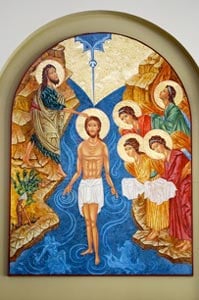 Baptism, the Christian rite of initiation, is a ritual cleansing with water. Being observant Jews, the early Christians integrated the ancient Jewish practice of ritual bathing into Christian practice (e.g., Leviticus 14:8). Baptism was also used to initiate converts to Judaism, and the Essenes, contemporaries of Jesus, practiced a daily ritual of bathing. According to accounts in the Gospels, John the Baptizer, who baptized his followers as a sign of repentance, baptized Jesus as well. Jesus later instructed his followers to baptize others. For early Christians, baptism was a sign of moral purification, the beginning of new and eternal life, and an indication of the Christian's readiness for the coming Kingdom of God.
Baptism, the Christian rite of initiation, is a ritual cleansing with water. Being observant Jews, the early Christians integrated the ancient Jewish practice of ritual bathing into Christian practice (e.g., Leviticus 14:8). Baptism was also used to initiate converts to Judaism, and the Essenes, contemporaries of Jesus, practiced a daily ritual of bathing. According to accounts in the Gospels, John the Baptizer, who baptized his followers as a sign of repentance, baptized Jesus as well. Jesus later instructed his followers to baptize others. For early Christians, baptism was a sign of moral purification, the beginning of new and eternal life, and an indication of the Christian's readiness for the coming Kingdom of God.
 The first Christians conducted baptisms by total immersion in water. Many Christian groups still practice this immersive type of baptism, while others adopt a more symbolic sprinkling of the head with water. In the early years of Christianity, adults, not children, were baptized, and Christians would sometimes delay baptism until death, so that the sins of a lifetime could be washed away just prior to the soul's judgment before God.
The first Christians conducted baptisms by total immersion in water. Many Christian groups still practice this immersive type of baptism, while others adopt a more symbolic sprinkling of the head with water. In the early years of Christianity, adults, not children, were baptized, and Christians would sometimes delay baptism until death, so that the sins of a lifetime could be washed away just prior to the soul's judgment before God. 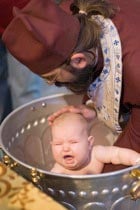 The practice of infant baptism emerged sometime within the first few centuries, and the liturgical churches still practice infant baptism. However, some Protestant groups teach that baptism should be voluntary and baptize only adult initiates.
The practice of infant baptism emerged sometime within the first few centuries, and the liturgical churches still practice infant baptism. However, some Protestant groups teach that baptism should be voluntary and baptize only adult initiates.
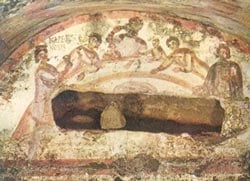 The distinctive Christian practice of the Eucharist also dates to the first Christians. Known also as the Lord's Supper, or Holy Communion, Christians believe that Jesus instituted the practice during the Passover meal he shared with his followers just before his arrest and death. As a remembrance of the death and resurrection of Jesus, early Christians met weekly to share meals of bread and wine, accompanied by prayer. In his first letter to the Corinthians, Paul instructed this early Christian congregation on the sharing of the Lord's Supper and explained the reason for the sacrament:
The distinctive Christian practice of the Eucharist also dates to the first Christians. Known also as the Lord's Supper, or Holy Communion, Christians believe that Jesus instituted the practice during the Passover meal he shared with his followers just before his arrest and death. As a remembrance of the death and resurrection of Jesus, early Christians met weekly to share meals of bread and wine, accompanied by prayer. In his first letter to the Corinthians, Paul instructed this early Christian congregation on the sharing of the Lord's Supper and explained the reason for the sacrament:
The Lord Jesus, on the night he was betrayed, took bread, and when he had given thanks, he broke it and said, "This is my body, which is for you; do this in remembrance of me." In the same way, after supper he took the cup, saying, "This cup is the new covenant in my blood; do this, whenever you drink it, in remembrance of me" (1 Corinthians 11:23-26).
 Beliefs about the Eucharist vary greatly among Christians. Some churches, most notably the Roman Catholic Church and, with less specificity, the Eastern Orthodox churches, believe that upon blessing the bread and wine in the ritual of the Eucharist, these food items literally become the body and blood of Jesus or embody his presence in a special way. Other denominations interpret the rite symbolically, believing that eating the bread and drinking the wine memorialize the sacrificial action of Christ.
Beliefs about the Eucharist vary greatly among Christians. Some churches, most notably the Roman Catholic Church and, with less specificity, the Eastern Orthodox churches, believe that upon blessing the bread and wine in the ritual of the Eucharist, these food items literally become the body and blood of Jesus or embody his presence in a special way. Other denominations interpret the rite symbolically, believing that eating the bread and drinking the wine memorialize the sacrificial action of Christ.  In either case, sharing the bread and wine is held to remember Christ's first coming, anticipate his second coming, and create a unity, or communion, of believers.
In either case, sharing the bread and wine is held to remember Christ's first coming, anticipate his second coming, and create a unity, or communion, of believers.
The frequency of the Eucharistic observance varies a great deal as well. The liturgical churches include the Lord's Supper in all of their weekly services and on holy days throughout the year. Some liturgical churches share the Lord's Supper daily, with the exception of Holy Saturday, the day just before Easter Sunday, when Jesus lay dead in the tomb. Non-liturgical churches prefer to highlight preaching and Bible study at their Sunday services, and usually share the Lord's Supper monthly. Most churches use bread or small wafers; many use wine, but some share grape juice or water in its place.
 In addition to these two widely practiced and sacred sacraments, some consider a handful of other rituals sacramental as well. In some churches, believers receive a "strengthening" blessing called confirmation at some time following their baptism. The sacrament of reconciliation, or confession, takes place when a repentant person confesses his or her sins in the presence of a priest, and is absolved. All denominations ordain vocational or professional ministers, and for some, ordination is a sacrament. Marriage is not only a civil contract but a sacrament, performed by the marrying couple before God, while the minister and congregation act as witnesses.
In addition to these two widely practiced and sacred sacraments, some consider a handful of other rituals sacramental as well. In some churches, believers receive a "strengthening" blessing called confirmation at some time following their baptism. The sacrament of reconciliation, or confession, takes place when a repentant person confesses his or her sins in the presence of a priest, and is absolved. All denominations ordain vocational or professional ministers, and for some, ordination is a sacrament. Marriage is not only a civil contract but a sacrament, performed by the marrying couple before God, while the minister and congregation act as witnesses.
In the Roman Catholic tradition, a Christian who is close to death may receive the anointing of the sick, or extreme unction, from a priest who prays with the sick person while anointing them with oil. This sacrament is both an absolution of sin and a preparation for departure from this life, giving the sick person a sense of peace and confidence in God's mercy and salvation.
 In the Christian view, death is a passage to the eternal life promised by Christ. The funeral rite combines the sorrow of loss with the joy and confidence Christians feel in the promise of the resurrection. At the funeral, Christians recall the brevity of life and the destiny of the soul, renewing their hope in the promise of resurrection and eternal life. While burial was the convention among Christians for many centuries, modern Christians may choose cremation as an alternative. Remembrance rituals include lighting a candle or saying prayers for the departed soul. Unlike some religions, Christians have no prescribed period of mourning for the dead.
In the Christian view, death is a passage to the eternal life promised by Christ. The funeral rite combines the sorrow of loss with the joy and confidence Christians feel in the promise of the resurrection. At the funeral, Christians recall the brevity of life and the destiny of the soul, renewing their hope in the promise of resurrection and eternal life. While burial was the convention among Christians for many centuries, modern Christians may choose cremation as an alternative. Remembrance rituals include lighting a candle or saying prayers for the departed soul. Unlike some religions, Christians have no prescribed period of mourning for the dead.
The sacraments of the Christian churches are believed to be the visible or physical instruments of the delivery of God's grace, which is divine favor and divine love. Whether a tradition believes in many sacraments, or only a few, the goal of connecting the individual or community with God's grace is central to Christian worship and practice.
Study Questions:
1. What is baptism? How did it originate?
2. What is the Eucharist? Why is there conflict about what happens within the blessed bread and wine?
3. Why is confirmation seen as a sacrament? Marriage?
4. Is death treated with a structured ritual? Explain.








